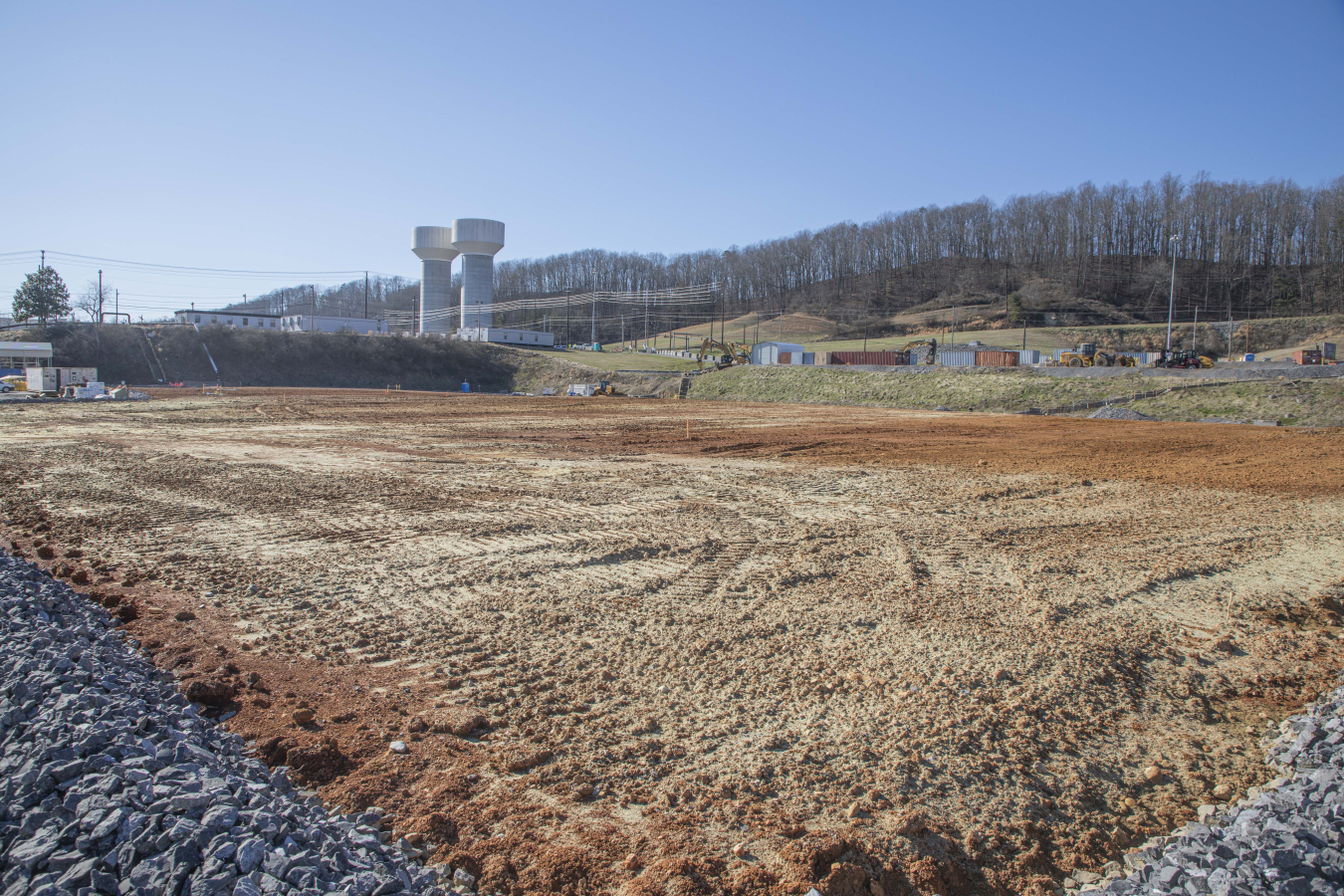The U.S. Department of Energy’s Oak Ridge Office of Environmental Management (OREM) and its cleanup contractor UCOR recently completed a project that clears land for an important new facility at the Y-12 National Security Complex.
Oak Ridge Office of Environmental Management
December 20, 2022
OAK RIDGE, Tenn. – The U.S. Department of Energy’s Oak Ridge Office of Environmental Management (OREM) and its cleanup contractor United Cleanup Oak Ridge (UCOR) recently completed a project that clears land for an important new facility at the Y-12 National Security Complex (Y-12).
Crews finished demolishing the former Biology Complex at Y-12 last year. Since that time, workers have been focused on tearing up the expansive building foundations. That work is now complete, and it provides 18-acres for the National Nuclear Security Administration to construct its new Lithium Processing Facility (LPF) at Y-12.
“If you look around the Y-12 complex, really East Tennessee, we don't have a lot of flat land, and the valley here has some space restrictions, so if we're going to continue to invest in Y-12 and support this mission, we're going to need to remove some facilities so we have room for newer facilities,” said Consolidated Nuclear Security President and CEO Rich Tighe.
Tighe continued, “I think it's interesting that the work that was done in the Biology Complex was important and groundbreaking genetic research. To put a new facility there that has a very different mission, but is equally important to the nation, is kind of a neat way to think about what happened when the facility was demolished, and what's going in its place.”
The Biology Complex, which dates back to the 1940s, was originally comprised of 11 buildings. It was initially constructed for recovering uranium from process streams, but it was later used for research that led to strides in understanding genetics and the effects of radiation.
The complex was shut down in 2002 and later categorized as containing high-risk excess facilities due to their deteriorated structural condition. OREM is tasked with removing those facilities, and others like them, to eliminate risks and open land for expanding research and national security missions in Oak Ridge.
“The completion of cleanup at the Biology Complex is paving the way for NNSA to begin construction of the Lithium Processing Facility,” said NNSA Production Office Manager Teresa Robbins. “LPF will replace a World War II era facility with a modern capability for processing lithium materials necessary for refurbishing and modernizing the nation’s nuclear weapon stockpile.”
The demolition project involved clearing away facilities that spanned 330,000 square feet and stood up to six stories tall. Workers also removed 3.5 million pounds of asbestos and waste from the deteriorating 1940s-era facilities prior to their teardown.
“This is a very exciting part of the job because you actually get to see the tangible effects of the work that you're doing,” said OREM Acting Manager Laura Wilkerson. “You work very hard every day to coordinate, partner with others and get all the pieces of the puzzle together so that you can get the job done. And days like today just put everything in perspective because you get to see the impact that the work that you're doing is having in the community is helping to create jobs, is helping to expand missions of the sites on the Oak Ridge Reservation, so it’s very rewarding to see all of it come together.”
The evolution of the Biology Complex site is the first of many transformations OREM has planned at Y-12. Crews recently completed demolition of another high-risk excess contaminated facility, the former Criticality Experiment Laboratory. Workers are also deactivating several former Manhattan Project-era uranium enrichment facilities to prepare them for demolition, including Alpha-2, Alpha-4 and Beta-1.
“Other OREM work now underway will help address the environmental legacies of Cold War-era production and will facilitate future modernization efforts,” said Robbins.

